The Hoax Interview – King Blues
Jesse Davey and Jon Amor, back together with their musical brethren in the magnificent, mould-breaking Hoax, talk of gear and how they braved taking on the songs of the great BB King.

In the early 1990s, most young bands were modelling themselves on the likes of the Stone Roses or Nirvana. Not so four teenagers from a sleepy village in Wiltshire, a group of contrary individuals who chose to immerse themselves in the blues.
They swiftly became perhaps the UK’s best-loved cult blues outfit, unusual not only for their tender years but also for the vitality and excitement they bestowed on what was then considered a mature player’s genre. These days, despite the fact that the Hoax are still relatively little-known in some quarters, their gigs sell out with very little promotion or fuss – and when they launched a pledge project to fund their first new studio album for 14 years, they had the required cash in days.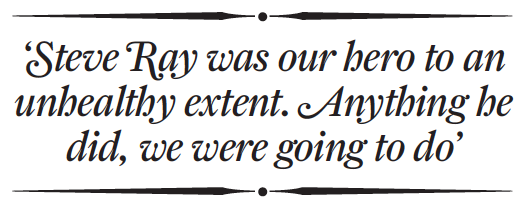 The Hoax’s blues passion originally grew out of a love of Dire Straits, Stevie Ray Vaughan and Dr Feelgood, but this led to a voyage of discovery that took in all the blues originators. Jon Amor and Jesse and Robin Davey were all inspired to take up the guitar, with Rob switching to bass, while Jesse’s mate Hugh Coltman came in on vocals, and a short run of drummers culminated in Dave Raeburn. The Hoax was born.
The Hoax’s blues passion originally grew out of a love of Dire Straits, Stevie Ray Vaughan and Dr Feelgood, but this led to a voyage of discovery that took in all the blues originators. Jon Amor and Jesse and Robin Davey were all inspired to take up the guitar, with Rob switching to bass, while Jesse’s mate Hugh Coltman came in on vocals, and a short run of drummers culminated in Dave Raeburn. The Hoax was born.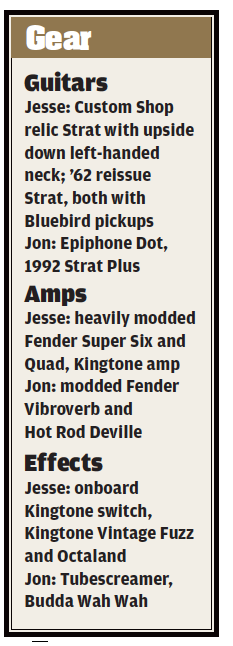
‘It’s a strange kind of anachronism, really, that some middle-class white boys in Wiltshire should decide that they loved the blues,’ muses Jon. ‘I just liked the honesty and the rawness of it. When Rob and Jess got into music I lent them a few albums – I think it was Dr Feelgood’s Stupidity, and some Stevie Ray Vaughan – and they got the calling as well.’
‘On our local scene there were a lot of older blues bands playing sort of Dr Feelgood stuff,’ explains Jesse, ‘so that was around us a lot at the time. I then got into the rootsy blues like Albert King and BB King, and obviously Stevie Ray Vaughan. It’s very expressive music and it just fitted us.’ Jon agrees: ‘Stevie Ray was our hero… to an unhealthy extent. Anything he did, we decided we were going to do as well.’
That meant Strats strung with the thickest strings that their fingers could bear and blues played with total commitment and an energy that astonished local audiences at that time. ‘I don’t think people really knew what to make of us when we first started gigging,’ Jon recalls.
‘There would be these strange kind of expressions on people’s faces… they just didn’t quite believe what they were seeing. We used to play with our balls to the wall – even in rehearsals, I remember playing for my life. Obviously with two guitar players you get a natural positive kind of competitiveness, which added to it, and because you also had Hugh soloing on the harmonica by then, it was just infectious. It’s only looking back with a bit of distance that you realise what an impact we had.’
Even now, Jesse still marvels at how quickly the band progressed from local pub back rooms to international touring band. ‘To begin with there might have been five people who would wander in, then we’d play a month later and there’d be 10 people, and then within six months to a year the places were full. We did bigger venues and started getting offered some support slots. I think it may have been at a slot opening for Walter Trout that Mike Vernon came to see us, and he pretty much signed us on the spot.’
Mike Vernon was the man who signed Fleetwood Mac, and he instantly knew these lads had something special. The Hoax were signed to his Code Blue label, and Vernon produced the 1994 debut album Sound Like This. Just a few short years after they had first picked up their instruments, the band were touring in Europe and America.
After Unpossible the band formed their own Credible Records and brought in drummer Mark Barrett, but after five years and over 2000 gigs, the band split to explore other projects. Jess and Rob are now based in LA working as award-winning video/film and TV directors, Hugh has forged a solo career in France, and the Jon Amor Blues Group has won many fans on the UK scene and beyond.

The Hoax reformed: drummer Mark Barrett, Jesse Davey (guitar), Hugh Coltman (vocals) Jon Amor (guitar) and Robin Davey (bass)
For a long time Hoax gigs were rare one-off treats, scheduled only when diaries allowed, but in 2010 they announced the band had officially reformed and they have been touring regularly since. And could an album follow? Jesse decided they would let the fans themselves decide if there was enough appetite for the project by setting up an internet pledge fund.
‘There was an incredible response,’ he says. ‘I think we raised what we needed in just over a week. It was humbling and really quite motivating. It put a bit of pressure on. It was like, “We’ve got to make an album now and it’s got to be good”. It was an exhilarating process.’
Without a song to their name the band went into the studio in Anaheim, California for two weeks and came out with Big City Blues, an explosive collection of songs that proved the fans’ instincts to be bang on the money. Jon: ‘We would write a song at the start of the day, put some sort of arrangement to it and then hit record, so it was quite intense. There were a few guitar and vocal overdubs but most of it is live, as it happened in the room. We never did more than three or four takes for each song, so it sounds fresh and spontaneous and it jumps out of the speakers. There are times when you feel you are in the room with the band, and I love that.’

Jon Amor with Epiphone, Jesse Davey with ‘indigenous’ Strat and Robin Davey and his Music Man Big Al five-string bass
The band did take a day or two to make sure they had the best possible sounds before they began work. Jesse – whose conscientious approach to tone has rubbed off on Jon and Robin – has been modding his own amps since the early days, and now he has his own range of pedals, pickups and an amp, available from www.kingtoneguitar.com. His latest triumph is the Kingtone switch, and all Jesse’s guitars feature his own Bluebird pickups.
‘I can be really nerdy!’ he confesses. ‘Initially it sprang from changing things – my tube amps would always break down, so I’d fix them, but change little things like capacitors to make it a little bit brighter or a little bit warmer. Then I moved on to messing around with pickups, first rewinding, then making them from scratch.
The Kingtone switch basically makes a single-coil sound a bit more like a humbucker as you roll it back – a slightly deeper tone but still with the edge, there’s a sort of tubey feel to it. I use it all the time. The first one was built into a guitar pedal, but it made more sense to have it on a guitar. It’s a fairly basic passive circuit. I do sell them, and a lot of people say they just leave it on all the time because when you turn it off it sounds really thin.’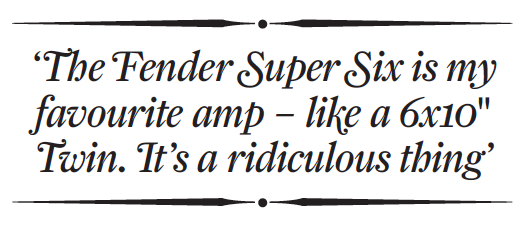 A Kingtone switch is built into his white Custom Shop relic Strat. The guitar sports a left-handed neck and was originally built for Mato Nanji, frontman of native American blues-rockers Indigenous. ‘I’d been friends with Mato for a long time, and he wasn’t using it. I’d pick it up and play it every time I was over, so he eventually gave it to me.
A Kingtone switch is built into his white Custom Shop relic Strat. The guitar sports a left-handed neck and was originally built for Mato Nanji, frontman of native American blues-rockers Indigenous. ‘I’d been friends with Mato for a long time, and he wasn’t using it. I’d pick it up and play it every time I was over, so he eventually gave it to me.
I like the neck because it means the low strings are longer, a little bit tighter, a bit more twangy, and the high strings are shorter so they’re a little bit looser and easier to bend. It’s a bit like having a short scale. For playing blues, it’s ideal.’
Jesse favours Fender amps, but most have been reworked. ‘The Fender Super Six is my favourite amp ever. It’s a bit like a 6×10″ Fender Twin, I guess – a ridiculous thing. I ended up chopping it down to a 4×10″ and put EV speakers in it so it’s stupidly heavy. It stays in the UK, so for recording I modified a Fender Quad and did my best to replicate the old Super Six for America.
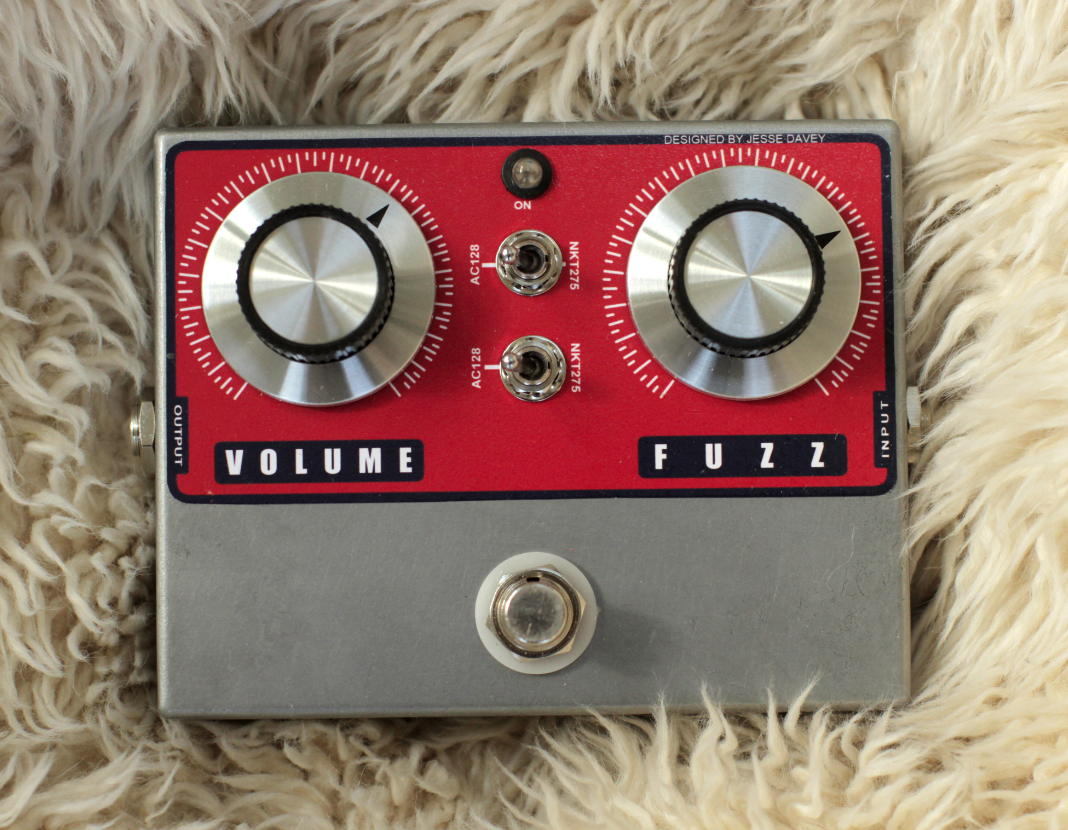
One of Jesse’s self-built pedals, the Vintage Fuzz
I use a Leslie cabinet which I love, it widens your sound. Then for the low end I use the Kingtone amp that I built from scratch. It’s based off my Super Six but with a lot more low end and lot more power, so it’s a 100W 4×12″ monster of an amp. It has 6L6s, so it’s quite clean; the Fender is generally the crunchy, distorted sound.’
Davey’s Vintage Fuzz and Octaland pedals are all over the record too. ‘I began building them because friends asked for them. I do still make them but I would have no life left if I took on all the orders, so I have to turn some down. I probably sell hundreds of pickups over the course of a year. I really enjoy making them, though. It’s fun being able to just build stuff and trying to create a tone – sometimes it works, and sometimes it doesn’t.’
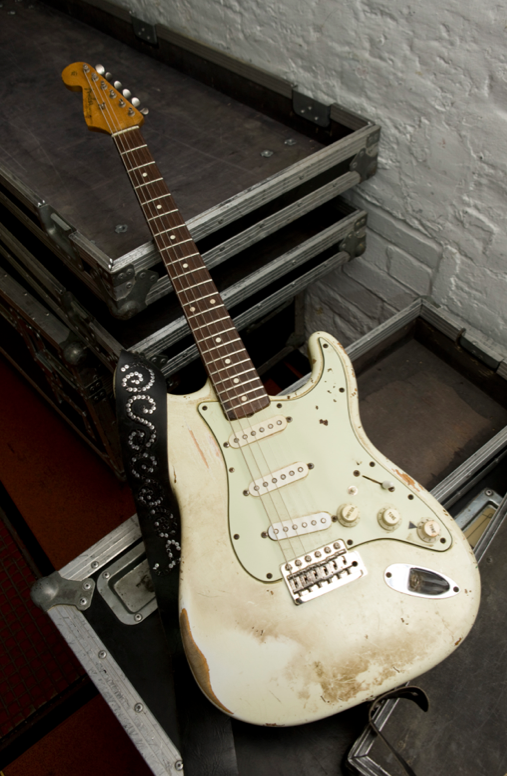
Jesse’s C5 Strat has Bluebird pickups and a special switch to thicken tone without losing bite
Jon stills plays the 1992 US Strat that has served him since the early days with the Hoax, but he has recently rebelled against two band traditions and taken to sensible gauge strings… on an Epiphone Dot. ‘We were dedicated Vaughan brothers fans, and for us playing a Gibson was going over to the dark side,’ he laughs.
‘We were all about the Strats. We always used to go for thick strings and a high action just because we liked those big Albert King bends. I think Jess had a 0.62″ as his low E at one point! It does give you that lovely chunky rhythm sound and a huge lead sound.
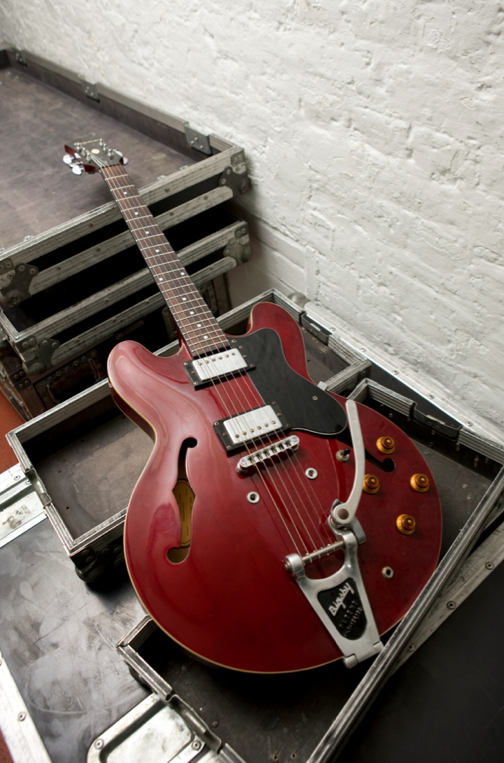
Jon’s Epiphone Dot with Bigsby has brought a new sound to the band
I’ve opened my mind a bit more recently, and I’m enjoying the semi-hollow sound. It’s got a real bark and a rawness about it. I fingerpick much more than I used to, and as soon as you start twanging the old Bigsby it instantly sounds cool. I like the snappy sound of lighter strings, but I’m getting ribbed for it, so I’ll probably have to go back to something a bit more manly!’
Amor also favours Fender amps, and his old Vibroverb holds a special place in his heart. ‘I bought it new about the same time I bought my Strat, but it looks like something out of the ’60s. It’s been a great servant. It’s survived two car crashes, it’s bolted together at the sides, but it just keeps going. I had it souped up so it’s 100W instead of the original 30W, and it’s got McKenzie speakers. I love it! I crank it up – I use a Hotplate to keep the volume under control, but I max it out on the volume and it just sings.
I use that along with a Hot Rod Deville which I use mainly for bottom end and a bit more grunt and distortion, where as the Vibroverb gives me the bite I need. Together you get a nice full tone. It’s a tough band to find your sound in. Jess has a tremendous big sound which is superb and wonderful to listen to, but it means I have to find different ways of cutting through.’
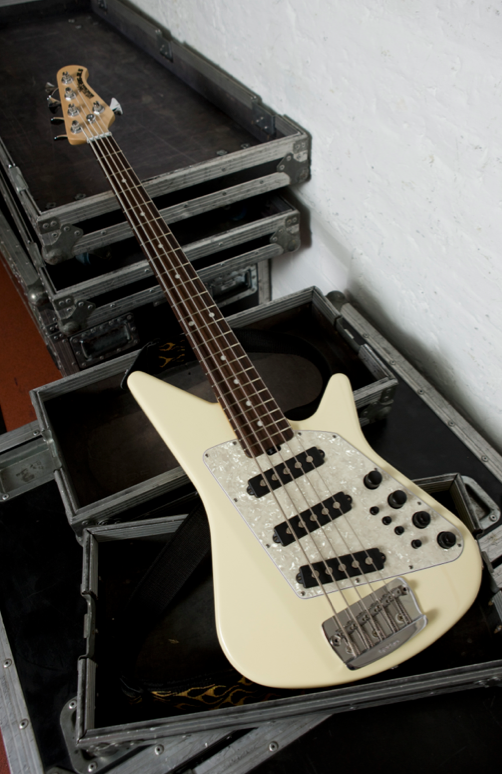
Robin’s three-pickup active/passive Music Man Big Al Bass
Such was the success of Big City Blues that a new album was required to fulfil demand. Recession Blues: A Tribute To BB King started as a slow-burning Jesse solo outing several years back but has now evolved into a true Hoax album. ‘We’ve always written our own songs with the Hoax,’ explains Jesse, ‘but I loved the idea of picking a bunch of blues songs and creating an album, and BB is one of my favourite guitar players. Rob picked some songs, and we realised that it would fit the Hoax. I’ve actually got a Gibson Lucille so I was very tempted to use it, but I found my ’62 reissue pink Strat did what I needed it to do.
‘We didn’t want to copy anything. It’s an “inspired by” album rather than an attempt to replicate BB’s music. I’ve never sat down and learnt licks, I’ve always just tried to get a feel of where the playing is coming from. With BB, it would be note bending and phrasing. He has a definite style but he never plays the same lick twice, ever! It’s a voice, and he sings with his guitar.’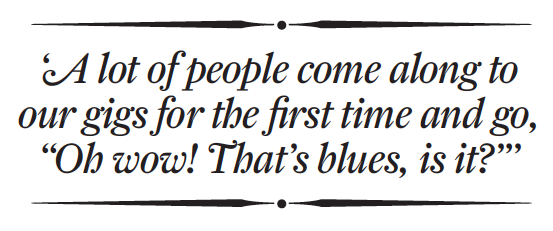 Jon is of a similar mind: ‘I didn’t really listen to the originals, I just did what I felt I should do as if it were a Hoax song. It’s futile trying to be BB King. I first saw him play on the When We Were Kings documentary on the Ali vs Foreman Rumble In The Jungle. I went out and bought the Take It Home album, which was the one he did with the Crusaders. I was expecting raw blues guitar but it was actually a kind of a soul album, but it’s punctuated with these great BB licks. It’s the economy of the notes – you instantly know it’s him.’
Jon is of a similar mind: ‘I didn’t really listen to the originals, I just did what I felt I should do as if it were a Hoax song. It’s futile trying to be BB King. I first saw him play on the When We Were Kings documentary on the Ali vs Foreman Rumble In The Jungle. I went out and bought the Take It Home album, which was the one he did with the Crusaders. I was expecting raw blues guitar but it was actually a kind of a soul album, but it’s punctuated with these great BB licks. It’s the economy of the notes – you instantly know it’s him.’
Many great projects have been graced by Hoax members: the Davey Brothers, Well Hung Heart, the Boom Band… but when they come together there’s a spark that brings the blues to life in a way that few can, and their shared mission to keep that treasured music vital is now being put front and centre once again.
‘I think that in the UK blues is still struggling a bit to be recognised as anything other than old man’s music, which is a shame,’ Jon considers. ‘People who don’t know much about it seem to think of it as miserable and depressing, but it’s really quite the opposite – it’s cathartic and uplifting… or it should be.
‘We constantly battle against those sort of prejudices. It’s still important to open people’s eyes to the genre. I know a lot of people who come along to Hoax gigs for the first time and come away thinking “Oh wow! That’s blues, is it?” That’s fantastic. It should make people want to move their butts!’
